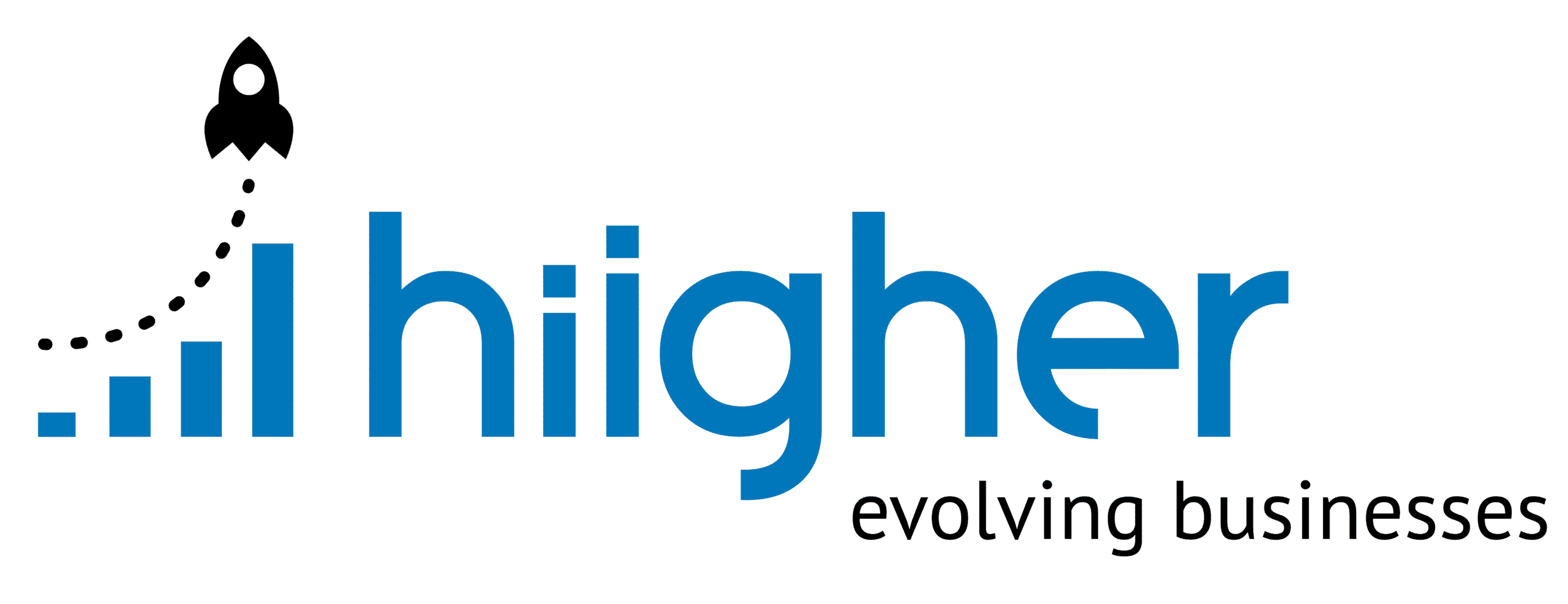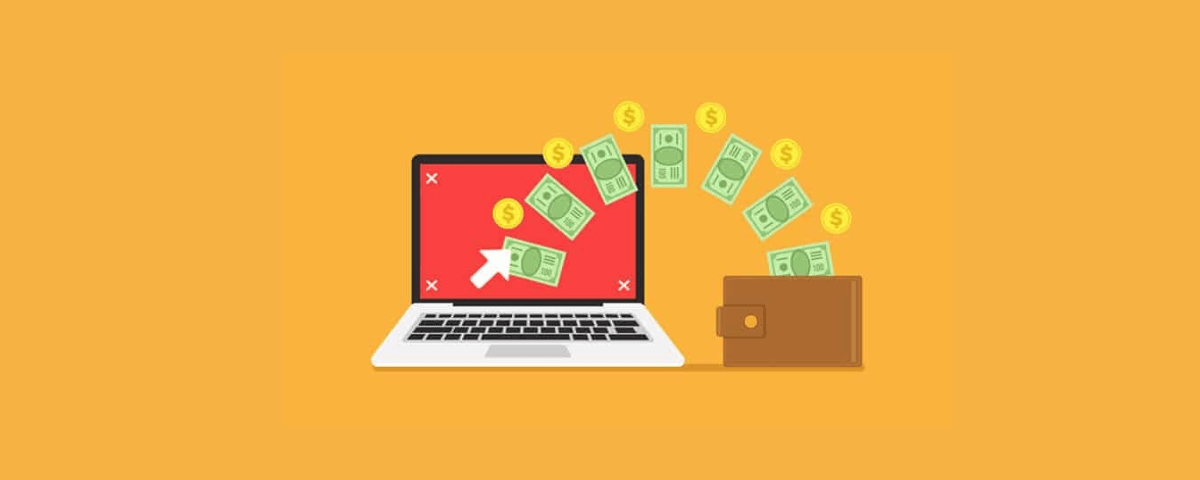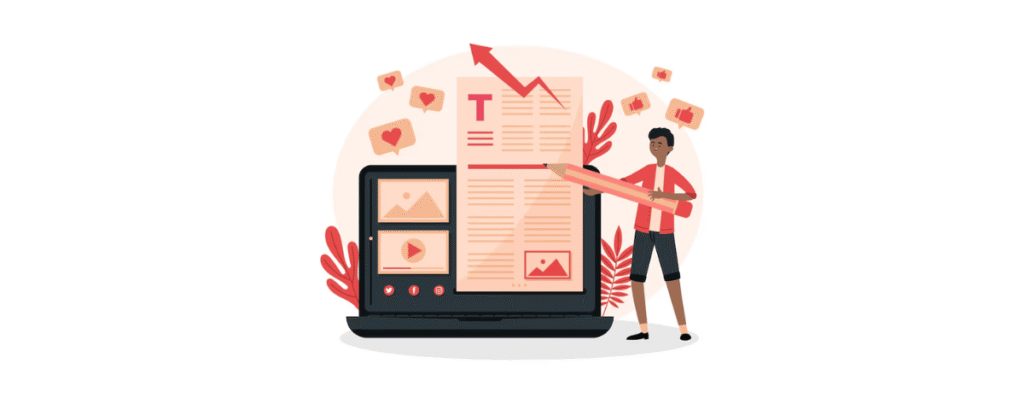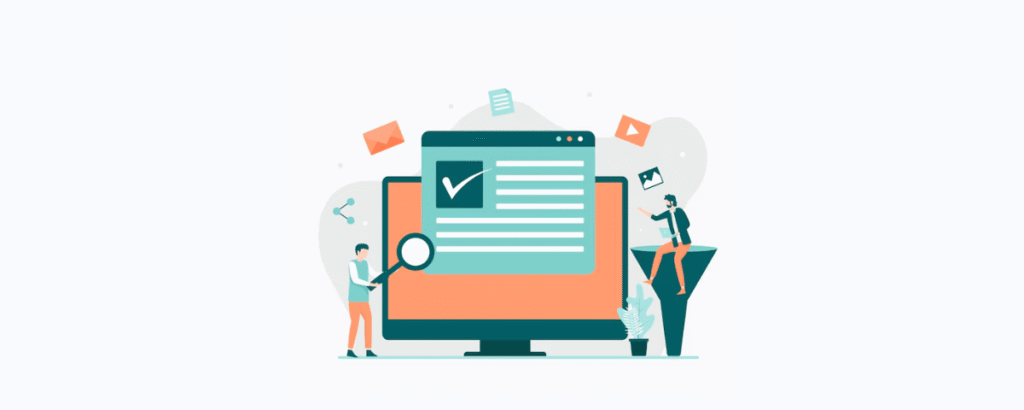- Storytelling in Marketing: How to Build Trust & Drive Growth - September 11, 2025
- Content Syndication: Boost Reach, SEO & Lead Generation - September 11, 2025
- Content Curation: Strategy, Tools & Benefits for Brands - September 11, 2025
CPC is simple at its core: it’s the amount you pay every time someone clicks your ad. Nothing more, nothing less. If you spent $500 and got 100 clicks, your CPC is $5. Pretty straightforward, right? But here’s the catch: the way CPC is calculated, influenced, and optimized can be the difference between profitable growth and wasted ad spend.
For example, Google Ads reported an average CPC of $4.22 in 2023. But if you’re in industries like law or finance, you know clicks don’t come cheap, those averages climb to $6, $7, and sometimes beyond. Why? Because those leads are worth a fortune, and advertisers are willing to pay a premium to win them.
That’s the beauty of CPC. Unlike models that charge you just for showing your ad (CPM) or only when someone buys (CPA), CPC strikes a balance. You’re not throwing money at impressions nobody notices, but you’re also not locked into only paying for conversions. You’re buying attention, one click at a time.
Contents
- How CPC Actually Works
- The Types of Ads That Run on CPC
- Key Components That Shape Your CPC
- How to Calculate CPC the Right Way
- Maximum CPC – Setting Boundaries for Your Budget
- Manual vs. Automated CPC Bidding
- Quality Score and Its Direct Impact on CPC
- How Ad Rank Shapes What You Pay
- Managing Your Budget with CPC Campaigns
- Tracking and Measuring CPC Performance
- Smart Strategies to Lower CPC Without Sacrificing Results
- The Role of Keyword Research in CPC
- Enhancing Ad Relevance to Reduce CPC
- Landing Page Optimization and CPC
- CPC vs. CPM vs. CPA – Which Model Should You Use?
- The Pros and Cons of CPC Advertising
- Alternatives to Google CPC Platforms
- Platform-Specific Audience Benefits
- Opportunities for Niche Publishers
- Industry Benchmarks for CPC
- Common Mistakes in CPC Campaigns
- Maximizing ROI with CPC
- Future Trends in CPC Advertising
- Frequently Asked Questions
- Conclusion
How CPC Actually Works
Every time you launch a PPC campaign, your ads don’t just magically appear at the top of Google. They enter a real-time auction. Here’s how it plays out:
- You set your maximum bid. This is the most you’re willing to pay for one click.
- Google (or the platform) scores your ad. This “Quality Score” depends on your ad relevance, expected click-through rate (CTR), and landing page experience.
- Your Ad Rank is calculated. Higher rank = better placement, but you don’t always need the highest bid to win.
- You pay only when someone clicks. And often, your actual CPC is lower than your max bid if your Quality Score is strong.
Here’s the formula Google uses to determine your actual CPC:
So if your ad is more relevant, you can pay less per click than a competitor with a sloppy ad and poor landing page. That’s why refining your creative, tightening your keywords, and polishing your landing pages isn’t just about looking good, it’s about saving money.
Why CPC Gives You More Control
One of the reasons marketers love CPC is the budget control it offers. You can:
- Set daily budgets so you never spend more than you planned.
- Pause or adjust campaigns instantly when you see performance drop.
- Scale up when a campaign is performing profitably.
Unlike old-school advertising where you pay up front and just hope people notice, CPC guarantees you’re only spending when someone actively engages. It’s the definition of measurable marketing.
And here’s the kicker: by working smarter on ad quality, you can bring your CPC down by 15% to 50%. That’s not theory, it’s data straight from Google.
The Types of Ads That Run on CPC
You’ve probably seen CPC ads thousands of times today without even realizing it. They come in all shapes and sizes, but they all share one thing, you pay when someone clicks.
- Search Ads: The text results you see at the very top of Google, often with a little “Ad” label.
- Shopping Ads: Product images and prices that appear when you search for items to buy.
- Image Ads: Visual banners you spot on websites and social platforms.
- Video Ads: YouTube promotions where you’re charged for clicks or sometimes views.
- Social Media Ads: Facebook, Instagram, LinkedIn, and Twitter campaigns built around audience targeting.
Each of these has different strengths, but they’re all powered by the same principle, pay per click. The real challenge is figuring out which ad types work best for your goals, budget, and industry.
Key Components That Shape Your CPC
On paper, CPC looks simple. But under the hood, a few moving parts decide whether you’re paying $1 or $10 for a single click. Understanding these components is the difference between bleeding budget and running profitable campaigns.
Here are the four pillars every advertiser should know:
- Bid Amount
Your bid is the maximum you’re willing to pay for a click. Think of it as setting your limit at an auction. Higher bids improve your chances of winning a spot, but it doesn’t always mean you’ll pay that full amount. - Quality Score
Google’s way of judging your ad. It looks at relevance, click-through rate (CTR) predictions, and the landing page experience. A higher Quality Score means cheaper clicks and better placements. - Ad Rank Formula
Remember, Google ranks ads by multiplying your Quality Score with your max bid. That means even if your competitor bids higher, you can outrank them if your ad is stronger. - Optimization Practices
This is where strategy comes in. Keyword research, ad copy testing, audience targeting, and landing page alignment are all levers you can pull to improve efficiency.
If you focus only on bids without improving Quality Score, you’ll overpay. But if you balance both, you’ll stretch your budget much further.
How to Calculate CPC the Right Way
Calculating your CPC isn’t rocket science, but it’s crucial for tracking ROI. Here’s the basic formula:
CPC = Total Cost of Campaign ÷ Total Clicks
Example: If you spent $1,200 and received 300 clicks, your CPC is $4.00.
But in practice, platforms like Google Ads tweak this with factors like Ad Rank and Quality Score. That’s why two advertisers can bid the same amount but walk away with very different CPCs.
The smarter you are with relevance and user experience, the less you’ll pay. That’s why strong copywriting, fast-loading landing pages, and clear calls-to-action aren’t just marketing fluff, they’re money savers.
Average CPC and Why It Matters
Knowing the average CPC in your industry is like checking house prices before making an offer. It gives you a benchmark so you know whether you’re overpaying or finding a bargain.
- Across Google Ads, the average CPC in 2023 was $4.22.
- Search ads tend to cost more (averaging around $5.26).
- Display ads are usually cheaper (about $0.58 on average).
- High-value industries like law, insurance, and finance can see CPCs soaring past $10.
But averages are just a starting point. Your real focus should be on how profitable each click is. For instance, a $7 click might sound expensive, but if it brings in a $1,000 client, it’s a steal.
Maximum CPC – Setting Boundaries for Your Budget
When you set a maximum cost per click, you’re telling the platform, “This is the most I’ll ever pay for a click.” It’s your safety net.
Here’s how it works in practice:
- You set your cap (say $2).
- The platform runs the auction.
- Your actual CPC often ends up being less than your maximum because of Ad Rank and Quality Score.
Setting a thoughtful max CPC keeps you competitive without blowing through your budget. And since Google suggests starting with around $1 when you’re new, you can always adjust upward as you collect performance data.
How to Set Effective Bids
Think of bidding like tuning a guitar, it requires adjustments until you hit the right note.
- Start Small – Begin with modest bids while gathering data.
- Track Key Metrics – CTR, conversion rate, and ROI tell you if you’re under- or over-bidding.
- Adjust Gradually – Scale up bids for high-performing keywords and trim the fat on weak ones.
- Use Automation – Tools like Google’s automated bidding can make real-time adjustments based on performance.
If you’re managing multiple campaigns across platforms, automated bidding often saves time while improving efficiency. But if you’re running a niche campaign with specific goals, manual bidding might give you the control you need.
Manual vs. Automated CPC Bidding
Every advertiser eventually faces the same question: Do I control every bid myself, or let the algorithm handle it? Both approaches have their perks, but the right choice depends on your budget, goals, and how much time you’re willing to invest.
Manual Bidding – Precision with a Price
With manual CPC bidding, you set the exact amount you’re willing to pay for each keyword. It’s like steering a race car, you’re in control of every turn.
- Pros: Full control, great for high-value keywords, ideal if you want to test and learn.
- Cons: Time-consuming, requires constant monitoring, tricky at scale.
Manual bidding works best when you’re targeting a small, well-defined group of keywords and you want every cent accounted for. But for larger campaigns, the time investment can quickly add up.
Automated Bidding – Smarter Scaling
Automated bidding, powered by machine learning, takes that control out of your hands and adjusts bids in real time. The algorithm looks at data like user behavior, time of day, and past performance, then tweaks bids to maximize conversions.
- Pros: Saves time, reacts instantly to market changes, often improves ROI.
- Cons: Less direct control, can overspend if not monitored, works best with lots of data.
Most advertisers find success blending the two, using automated bidding for broad campaigns and manual tweaks for high-value keywords. That’s why Enhanced CPC exists: it lets you set bids manually but allows the algorithm to adjust slightly for better results.
What Really Influences CPC Rates
CPC isn’t random, it shifts based on a handful of predictable factors. Here are the biggest levers:
- Bid Amount – Higher bids increase your chances of winning placement, but also raise costs.
- Ad Quality – Strong copy and relevance = better CTR = cheaper clicks.
- Competition – More advertisers chasing the same audience means higher CPC.
- Audience Targeting – Precision targeting (like CEOs in New York) costs more than broader targeting.
- Placement – Ads in premium positions (top of page, first video slot) cost more but deliver higher engagement.
The key takeaway? Paying attention to relevance and quality can save you just as much as lowering your bid.
Quality Score and Its Direct Impact on CPC
One of the most underrated tools in your arsenal is Google’s Quality Score. Rated from 1 to 10, this score reflects how relevant and useful your ad is to users.
- A score of 3 can increase your CPC by 25%.
- A score of 6 can lower it by 15%.
- A score of 10 can slash your CPC in half.
That means your ad copy, keywords, and landing page experience directly affect how much you pay.
How to Boost Your Quality Score
- Refine Ad Copy – Make sure it tightly matches your keywords and the user’s intent.
- Polish Landing Pages – Fast load times, mobile-friendly design, and clear CTAs all improve user experience.
- Use Relevant Keywords – Group them into tight clusters so your ads feel hyper-relevant.
- Monitor CTR – The more people click, the more Google rewards you with cheaper CPCs.
If there’s one area where Hiigher often helps clients pull ahead, it’s in Quality Score optimization. By aligning creative with platform-native best practices, campaigns don’t just get clicks, they get cheaper clicks that convert better.
How Ad Rank Shapes What You Pay
If CPC is the price tag, Ad Rank is the invisible hand deciding how much you actually spend and where your ad shows up. Google calculates Ad Rank by multiplying your Quality Score with your maximum bid.
Here’s why that matters:
- A higher Ad Rank doesn’t just mean better placement, it often means paying less than competitors below you.
- Advertisers with lower Quality Scores can actually end up paying more than you for worse placement.
- Improving your Quality Score is a double win, it boosts visibility and lowers CPC.
Think of Ad Rank like seating at a concert. Paying more might get you closer, but if you know the right people (in this case, Google’s algorithm), you’ll snag front-row seats for less.
Managing Your Budget with CPC Campaigns
One of the biggest strengths of CPC advertising is control over spend. Instead of wondering where your money went, you can see exactly how each click contributes to your bottom line.
Here’s how to keep your budget working for you, not against you:
- Set a Daily Budget – Once you hit it, ads pause automatically, protecting you from runaway spend.
- Monitor CPC Regularly – Track changes and spot inefficiencies before they drain your wallet.
- Reallocate Budget – Shift money from underperforming campaigns to the ones generating strong ROI.
- Leverage Automated Bidding Tools – Use historical performance data to refine bids over time.
Industry benchmarks can help set expectations. For example, the average CPC for search ads sits around $5.26, while display ads are far cheaper at $0.58. Knowing these baselines helps you decide whether your spend is efficient or needs tweaking.
Tracking and Measuring CPC Performance
Tracking CPC performance isn’t just about checking numbers in a dashboard, it’s about understanding whether your spend is fueling growth.
A smart tracking process includes:
- Real-Time Monitoring – Tools like Google Ads let you watch CPC trends as they happen.
- Benchmarking Against Industry Averages – Compare your CPC to industry standards to stay competitive.
- A/B Testing Ads – Experiment with ad copy, visuals, and calls-to-action to see what reduces CPC.
- Evaluating ROI – Look beyond clicks to actual conversions and revenue impact.
In my experience, advertisers who treat CPC as a living metric, constantly testing and refining, see the strongest results. It’s not about lowering CPC at all costs; it’s about making sure every dollar spent is delivering returns.
Smart Strategies to Lower CPC Without Sacrificing Results
Cutting CPC isn’t about slashing bids, it’s about making your ads more relevant and efficient. Here are proven tactics:
| Strategy | Why It Works | Impact on CPC |
| Keyword Research | Targeting intent-rich keywords raises relevance. | 15–50% reduction |
| Negative Keywords | Filters out irrelevant clicks. | Improves ROI |
| Landing Page Alignment | Consistency between ad and page boosts conversions. | Lower CPC + higher sales |
| Audience Relevance | Speaking directly to the right people raises CTR. | Cheaper clicks |
For example, when Hiigher works with eCommerce brands, we often see dramatic CPC reductions simply by tightening keyword groups and aligning ad copy with high-intent searches. It’s not magic, it’s strategic alignment that platforms reward with discounts.
The Role of Keyword Research in CPC
If CPC is the engine of your ad campaign, keywords are the fuel. Get them right, and your ads run smoothly at a lower cost. Get them wrong, and you’ll burn through budget with little to show for it.
How Keywords Impact Quality Score
Google’s Quality Score doesn’t just look at your ad, it looks at how well your chosen keywords align with user intent. The tighter the match, the higher your click-through rate (CTR), which directly lowers CPC.
To maximize results:
- Target High-Intent Keywords – Go after search terms where people are ready to act, not just browse.
- Use Negative Keywords – Exclude irrelevant traffic so you’re not paying for junk clicks.
- Group Keywords Smartly – Keep ad groups tight so each ad speaks directly to the searcher’s intent.
- Continuously Refine – Search trends evolve, and so should your keyword list.
When Hiigher runs keyword audits for clients, we often uncover 20–30% of their spend going to irrelevant clicks. Adding negative keywords alone can cut wasted spend dramatically, making every click more cost-effective.
Enhancing Ad Relevance to Reduce CPC
Ad relevance is more than matching words, it’s about delivering exactly what the user expects to see. Google rewards this alignment by lowering CPC and giving your ad better placement.
Here’s how to make ads more relevant:
- Mirror Search Intent – If someone searches “affordable SaaS tools,” your ad should say “affordable SaaS tools,” not just “SaaS software.”
- Highlight Benefits Clearly – People want to know what’s in it for them. Cut the fluff.
- Use Negative Keywords – Prevent your ads from showing on unrelated queries.
- Update Regularly – Even strong ads lose steam over time. Refresh copy to stay competitive.
Think of it like this: relevance isn’t just good for Google’s algorithm, it’s good for your audience. Nobody wants to click on an ad that feels like a bait-and-switch.
Landing Page Optimization and CPC
Even if your ad is perfect, a weak landing page can wreck your CPC. Why? Because Google measures landing page experience as part of your Quality Score.
A few quick fixes can make a huge difference:
- Match Ad Messaging – If your ad says “Free Trial,” your landing page should feature that front and center.
- Improve Load Speed – A slow page tanks conversions and hurts Quality Score.
- Prioritize Mobile – Over half of ad clicks happen on mobile devices. If your page isn’t mobile-friendly, you’re throwing money away.
- Test Calls-to-Action (CTAs) – Clear, bold CTAs can lift conversions by 20–40%.
Studies show optimized landing pages can boost conversion rates by up to 300%. That means the same $1,000 ad budget suddenly drives triple the results, all without raising bids.
CPC vs. CPM vs. CPA – Which Model Should You Use?
CPC isn’t the only way to pay for ads. To pick the right model, you need to understand the trade-offs.
- CPC (Cost Per Click): You pay only when someone clicks. Best for driving traffic to your site.
- CPM (Cost Per Mille): You pay per thousand impressions. Best for brand awareness and visibility.
- CPA (Cost Per Action): You pay only when someone completes a conversion (like a signup or purchase). Best for direct results.
Example: If you’re launching a new brand and want eyeballs, CPM might be the smarter play. If you’re focused on filling a webinar, CPC is perfect. And if you only care about actual purchases, CPA might make the most sense.
The truth? Most businesses blend these models depending on the campaign goal. But if ROI is your top priority, CPC often gives the best mix of control, measurability, and scalability.
The Pros and Cons of CPC Advertising
Like every marketing strategy, CPC advertising comes with upsides and trade-offs. The trick is knowing how to play to its strengths while avoiding common pitfalls.
Why Advertisers Love CPC
- You Pay for Action, Not Exposure – Unlike CPM, you’re not paying for impressions that nobody interacts with. Every dollar goes toward real engagement.
- Highly Measurable – CPC gives you clear numbers: cost, clicks, conversions. You’ll know exactly how campaigns are performing.
- Flexible Budgets – Set daily caps, adjust bids, or pause campaigns instantly. You’re always in control.
- Targeted Reach – With the right keyword and audience strategies, you can zero in on people actively searching for your offer.
The Drawbacks You Should Watch Out For
- High Competition = High Costs – Industries like law and insurance see CPCs well above $5, sometimes $10+.
- Click Fraud – Bots or competitors may drive up your costs with fake clicks. Platforms work to detect this, but it’s still a risk.
- Constant Monitoring Needed – CPC campaigns aren’t “set and forget.” They require ongoing testing, keyword adjustments, and budget shifts.
For most brands, the pros outweigh the cons, especially when campaigns are monitored closely and refined regularly.
Alternatives to Google CPC Platforms
Yes, Google dominates the CPC space, but it’s not the only option. Other platforms can deliver just as much, sometimes more, depending on your niche and audience.
Leading Non-Google Platforms
- Media.net – Powered by Yahoo and Bing, great for contextual ads across premium publishers.
- Amazon Advertising – Goldmine for eCommerce brands since ads show directly to high-intent shoppers.
- Infolinks – Specializes in in-text ads that blend into content, offering non-intrusive placements.
- Bidvertiser – Offers both CPC and CPM models with flexible ad types like banners and native ads.
- Meta Ads Manager (Facebook & Instagram) – Precision audience targeting with CPC bidding for clicks and conversions.
Each of these gives you different advantages. For example, if you’re running an eCommerce store, Amazon Advertising can outperform Google because buyers are already in “shopping mode.”
Platform-Specific Audience Benefits
The real power of expanding beyond Google is tailoring CPC ads to the right environment:
- Media.net matches ads contextually to content, boosting engagement.
- Infolinks turns keywords in blogs into clickable ads, connecting with readers mid-scroll.
- Amazon Advertising reaches people at the exact point of purchase intent.
- Meta Ads Manager lets you target by demographics, interests, and behaviors for surgical precision.
- Bidvertiser gives flexibility across formats and lets you experiment with ad placement.
When Hiigher supports clients looking to diversify, we often recommend testing multiple platforms side by side. The insights you gain, like whether Amazon outperforms Meta for your product, help you reallocate spend with confidence.
Opportunities for Niche Publishers
Not every business is aiming for mass-market reach. If your brand operates in a specialized niche, CPC opportunities exist that align tightly with your audience.
- Media.net is particularly effective for niche publishers, matching ads to hyper-relevant content.
- Infolinks is strong for blogs and websites with dedicated, topic-focused readers.
- Amazon Advertising works wonders if you sell niche products with loyal buyers.
- Bidvertiser lets smaller publishers monetize with CPC while keeping control over ad formats.
This is where smart advertisers win, they don’t just chase clicks everywhere, they find platforms where clicks are more likely to convert.
Industry Benchmarks for CPC
Before you judge whether your CPC is “good” or “bad,” it helps to know what’s normal for your industry. Costs can vary wildly depending on the competitiveness of your niche.
| Industry | Avg. CPC (Search) | Avg. CPC (Display) |
| Legal/Finance | $10+ | $1+ |
| E-Commerce | $2.69 | $0.58 |
| Low Competition | <$1 | <$0.50 |
Here’s what this means in practice:
- Legal & Finance: Extremely competitive. Firms know a single client can be worth thousands, so they’re willing to bid high.
- E-Commerce: Mid-range CPC, but fierce competition among online retailers keeps costs steady.
- Low-Competition Niches: Local or specialized industries often enjoy cheaper CPCs, sometimes under $1 per click.
Seasonality also plays a role. Retailers often see CPCs spike during Black Friday or holiday shopping periods when competition surges.
Common Mistakes in CPC Campaigns
Even with benchmarks in hand, many advertisers still waste money by falling into avoidable traps. Here are the biggest mistakes to sidestep:
- Weak Keyword Research – Skipping thorough research leads to irrelevant clicks and inflated costs.
- Ignoring Negative Keywords – Without them, your ads will attract unqualified traffic that drains budget.
- Unoptimized Ad Copy & Landing Pages – Poor alignment tanks your Quality Score and raises CPC.
- Neglecting Bid Adjustments – If you don’t monitor and tweak bids, you’ll overspend on underperforming keywords.
I’ve seen campaigns bleed 30–40% of their budget on irrelevant clicks simply because negative keywords were never set. That’s money straight out the window.
Maximizing ROI with CPC
Getting traffic is easy. Turning that traffic into profit is where the real challenge lies. To maximize ROI, you need a balance of smart bidding, relevance, and ongoing testing.
Practical Steps to Boost ROI
- Improve Quality Score – Even a small jump (from 5 to 7) can cut CPC by 20–30%.
- Do Deep Keyword Research – Focus on high-intent, long-tail keywords that deliver qualified leads.
- Leverage Automated Bidding – Let algorithms optimize for conversions, especially at scale.
- Test, Test, Test – Run A/B tests on ad copy, images, and landing pages to see what moves the needle.
Why ROI Matters More Than CPC Alone
A $7 CPC might feel expensive, but if it drives a $700 sale, that’s money well spent. ROI forces you to look beyond the click and evaluate the full funnel, are those clicks converting into customers?
At Hiigher, we often remind clients: don’t obsess over lowering CPC at all costs. Sometimes spending a little more per click brings in higher-quality leads that boost total revenue. The real win is efficiency, not just cheap clicks.
Why CPC is So Important in Digital Marketing
CPC isn’t just another metric buried in your dashboard. It’s the bridge between what you spend and what you actually get back.
Here’s why it matters so much:
- You Pay for Real Engagement – Every dollar goes toward actual clicks, not just impressions.
- It’s Easy to Track and Adjust – CPC gives you measurable performance data so you can pivot quickly.
- It Protects Your Budget – Daily caps and bid limits mean you’re never flying blind.
- It Directly Impacts ROI – Lowering CPC by even 20% frees up budget for more valuable clicks.
Simply put, CPC makes sure you’re not just shouting into the void, you’re connecting with people who are ready to act.
Future Trends in CPC Advertising
The way we buy clicks today won’t be the same five years from now. Technology and consumer behavior are already reshaping the CPC landscape.
- AI Optimization – Machine learning will continue fine-tuning bids and targeting, making campaigns smarter and more efficient.
- Mobile-First Spending – With over 70% of digital ad spend projected to be mobile by 2026, CPC rates on mobile will keep climbing.
- Voice Search – More searches via Alexa, Siri, and Google Assistant mean new keyword strategies tailored for spoken queries.
- Programmatic Advertising – Automated bidding across multiple platforms will make campaigns faster and more precise.
- Rising Costs in Niches – As competition heats up in specialized markets, CPC will trend upward.
The advertisers who stay ahead won’t just chase trends, they’ll adapt keyword strategies, creative, and targeting to meet users where they’re headed.
Frequently Asked Questions
What is CPC (Cost Per Click)?
CPC is what you pay every time someone clicks your ad. In 2023, the average CPC was $4.22, though it varies by industry.
How Do You Calculate CPC?
Divide your total campaign cost by the number of clicks. Example: $500 ÷ 100 clicks = $5 CPC.
How Much Should You Pay for CPC?
Start low, monitor results, and raise bids gradually until you find the sweet spot where cost and conversions balance out.
What’s the Difference Between CPC, CPM, and CPA?
- CPC = Pay per click.
- CPM = Pay per 1,000 impressions.
- CPA = Pay per conversion.
Pick the model based on your campaign goals.
Conclusion
At the end of the day, CPC is more than a number. It’s a window into how effectively your ads turn attention into action.
If you treat CPC as a dial you can fine-tune, through smarter keywords, stronger ad relevance, better landing pages, and smarter bidding, you’ll see real, measurable growth.
That’s why performance-driven agencies like Hiigher put CPC at the center of their strategies. It’s not about chasing vanity metrics; it’s about making every click count, driving revenue, and scaling without waste.
In digital marketing, the truth is simple: clicks cost money, but the right clicks make you money. The businesses that understand this are the ones that win.
How useful was this?
Click on a star to rate it!
Average rating 0 / 5. Vote count: 0
No votes so far! Be the first to rate this post.
We are sorry that this post was not useful for you!
Let us improve this post!
Tell us how we can improve this post?




